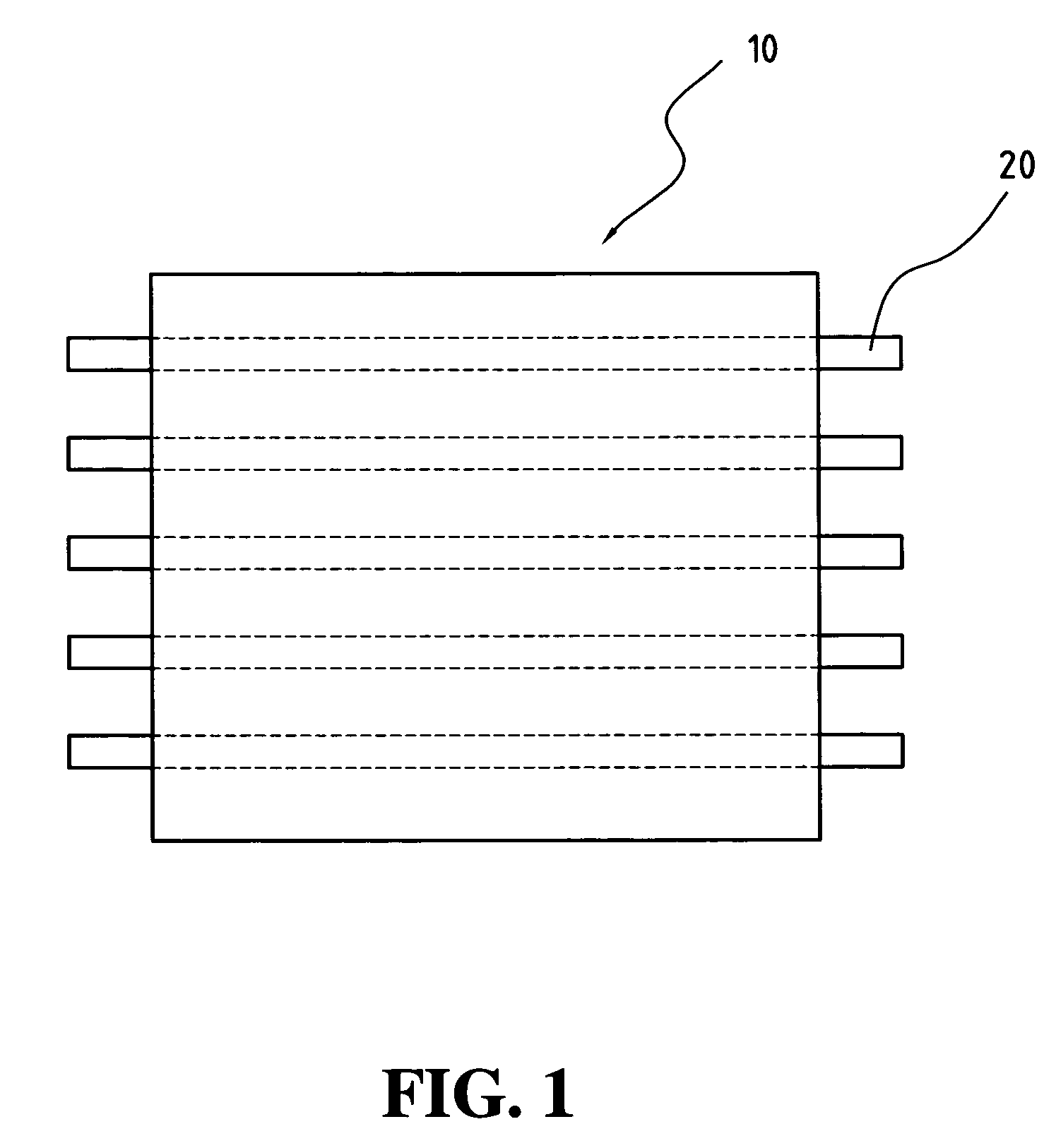Method and device used for eliminating image overlap blurring phenomenon between frames in process of simulating CRT impulse type image display
a technology of image display and image overlap, applied in the field of method and device used to eliminate the image overlap blurring phenomenon between frames in the process of simulating crt impulse type image display, can solve the problems of pixel only producing light, drawbacks and limitations that must be overcome and improved, and much lower power consumption and heat dissipation, so as to reduce the accumulated liquid crystal optical response and eliminate the image overlap blurring phenomenon. , the effect of reducing the luminance of backligh
- Summary
- Abstract
- Description
- Claims
- Application Information
AI Technical Summary
Benefits of technology
Problems solved by technology
Method used
Image
Examples
embodiment 1
[0059]In the following analysis, please refer to FIGS. 1, 3(a), 3(b) and 4(a)-4(e) as we explain first embodiment of the present invention.
[0060]Referring to FIG. 1, it indicates the structure arrangement of the liquid crystal display panel and backlight unit used according to the first embodiment of the present invention.
[0061]FIG. 3(a) indicates the pixel array formed by the cross points of a plurality of gate lines and data lines, and the simulation driving circuit formed by a plurality of data driver and gate driver according to the first embodiment of the present invention.
[0062]FIG. 3(b) represents the liquid crystal display simulation driving device according to the first Embodiment.
[0063]FIGS. 4(a)-4(d) indicate the relations of the waveform curves between the driving voltage pulse of the liquid crystal molecules VLC, the backlight control voltage BV, backlight luminance response BL, and the accumulated liquid crystal optical response Lq generated by the image blurring elimi...
embodiment 2
[0080]In the following analyses, please refer to FIGS. 1, 5(a), 5(b) and (a) to 6(d) as we explain second embodiment of the present invention.
[0081]First, please refer to FIG. 1, it indicates the structure arrangement of the liquid crystal display panel and backlight unit used according to the second embodiment of the present invention.
[0082]FIG. 5(a) indicates the pixel array formed by the cross points of a plurality of gate lines and data lines, and the simulation driving circuit formed by a plurality of data driver and gate driver according to the second embodiment of the present invention.
[0083]FIG. 5(b) represents the liquid crystal display simulation driving device according to the second embodiment.
[0084]FIGS. 6(a) to 6(d) indicate the relations of the waveform curves between the driving voltage pulse of the liquid crystal molecules VLC, the backlight control voltage BV, backlight luminance response BL, and the accumulated liquid crystal optical response Lq generated by the i...
embodiment 3
[0091]In the following analyses, please refer to FIGS. 1, 7(a), 7(b) and 8(a) to 8(d) as we explain third embodiment of the present invention.
[0092]First, please refer to FIG. 1, its indicates the structure arrangement of the liquid crystal display panel and backlight unit used according to the third embodiment of the present invention.
[0093]FIG. 7(a) indicates the pixel array formed by the cross points of a plurality of gate lines and data lines, and the simulation driving circuit formed by a plurality of data driver and gate driver according to the third embodiment of the present invention.
[0094]FIG. 7(b) represents the liquid crystal display simulation driving device according to the third embodiment.
[0095]FIGS. 8(a) to 8(d) indicate the relations of the waveform curves between the driving voltage pulse of the liquid crystal molecules VLC, the backlight control voltage BV, backlight luminance response BL, and the accumulated liquid crystal optical response Lq generated by the ima...
PUM
 Login to View More
Login to View More Abstract
Description
Claims
Application Information
 Login to View More
Login to View More - R&D
- Intellectual Property
- Life Sciences
- Materials
- Tech Scout
- Unparalleled Data Quality
- Higher Quality Content
- 60% Fewer Hallucinations
Browse by: Latest US Patents, China's latest patents, Technical Efficacy Thesaurus, Application Domain, Technology Topic, Popular Technical Reports.
© 2025 PatSnap. All rights reserved.Legal|Privacy policy|Modern Slavery Act Transparency Statement|Sitemap|About US| Contact US: help@patsnap.com



